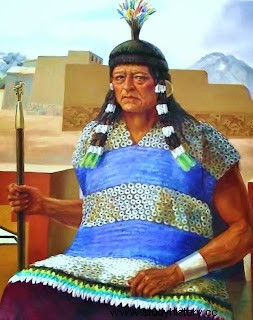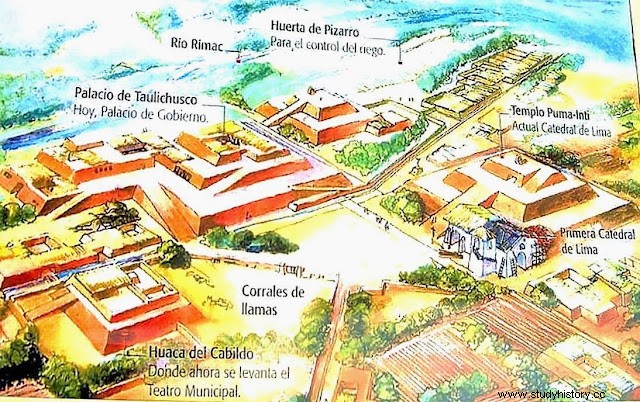 Taulichusco curaca that dominated Lima Almost unanimously, the speeches and newspaper articles on the occasion of the commemoration of a new anniversary of the founding of Lima coincide in highlighting the Spanish participation in said event, while silencing the Andean aspect of that fundamental episode of the colonization of the ancient Inca territory. […]. Both the curacazgo and the river that crosses their lands and fertilizes their fields were called Lima or Limac. The Quechua of the central coast, softer than that of Cusco, did not use the “r” but the “l”. Hence, the place names of the central plains were pronounced differently, depending on the origin of the speaker:mountain or yunga. Lima was a small curacazgo subject to the lordship of Ychma, which included the lower valleys of the basins of the Rímac and Lurín rivers. Its main seat was the ceremonial center called Pachacámac by the Inca conquerors in honor of the god of the same name, whose cult radiated over the entire central region of Tahuantinsuyo and also reached distant places in the Andean area. Not only were the omens emitted by the divinity appreciated, but he was revered as the god of tremors. His anger was manifested in the intensity of the shaking and the degree of his anger, in the destructive force of the seismic waves.
Taulichusco curaca that dominated Lima Almost unanimously, the speeches and newspaper articles on the occasion of the commemoration of a new anniversary of the founding of Lima coincide in highlighting the Spanish participation in said event, while silencing the Andean aspect of that fundamental episode of the colonization of the ancient Inca territory. […]. Both the curacazgo and the river that crosses their lands and fertilizes their fields were called Lima or Limac. The Quechua of the central coast, softer than that of Cusco, did not use the “r” but the “l”. Hence, the place names of the central plains were pronounced differently, depending on the origin of the speaker:mountain or yunga. Lima was a small curacazgo subject to the lordship of Ychma, which included the lower valleys of the basins of the Rímac and Lurín rivers. Its main seat was the ceremonial center called Pachacámac by the Inca conquerors in honor of the god of the same name, whose cult radiated over the entire central region of Tahuantinsuyo and also reached distant places in the Andean area. Not only were the omens emitted by the divinity appreciated, but he was revered as the god of tremors. His anger was manifested in the intensity of the shaking and the degree of his anger, in the destructive force of the seismic waves.At the time of the arrival of the Spaniards in these lands, the old Taulichusco was curaca of Lima, a character who did not belong to the lineage of the ancient chiefs of the region, whom the Cusco conquerors replaced by addicted people [ …]. It should be explained here that, according to the constant Andean duality, the curacazgo of Lima was divided into the bands of Anan and Lurín, each of them with their respective curaca […]. The expenses incurred in maintaining the Hispanic founders and in the construction of the new city naturally fell on the Indians. This heavy load severely affected the native settlers of Lima, whose number soon decreased alarmingly. According to data from Spanish archives, in 1535 the lordship of Lima had some 4,000 tributaries, men of working age. In 1544, less than nine years later, there were twelve hundred men left and only 250 in 1557 […].

Taulichusco died before Pizarro's assassination in 1541. The succession was carried out without major problems, since the new chief, Guachianiamo, had collaborated in his father's government as co-regent [...]. His government was short-lived […]. It was thus that a son of Taulichusco, named Gonzalo, was appointed to the position of curaca, who we know desperately defended the rights and lands of his people [...]. Over the years and the increase in the European population, the lack of land to build houses and orchards became felt in Los Reyes. For this reason, in the time of the Marquis of Cañete, it was decided to move the natives of Lima to a more remote place, in order to take advantage of their land. It was decided to create the town and indigenous reduction of Santa María Magdalena, to which they went live not only the natives of Lima, but also those of Maranga, Guatca, Amancaes and Guala […]. After so many injustices, it is time for the commune of Lima to offer a belated vindication to Don Gonzalo and, in his person, to its former inhabitants […] María Rostworowski The Sunday, January 25 from 1981.
